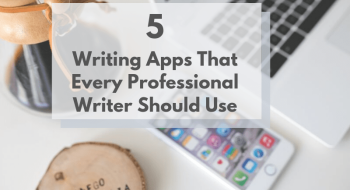20 Tips for Writing Blogs That Break the Mold

As any seasoned blogger will tell you, writing blogs is not just about putting words on a digital page; it’s a dynamic art form that blends creativity, information, and connection. It’s about creating captivating content that influences the minds of readers.
When writing a blog, it is important to consider not only what you say but also how you say it. The writing style and tone play a crucial role in engaging the reader and conveying your message effectively.
A compelling blog should provide valuable information and at the same time be enjoyable to read.
What Is a Blog?
A blog (short for “weblog”) is an online journal or informational website that displays information in reverse chronological order, with the latest posts appearing first. It is typically written and maintained by the blog’s owner, who can include text, images, videos, and other multimedia elements. It serves as a platform for expressing ideas, sharing information, and engaging with an audience.
What Are the Key Characteristics of a Blog?
The key characteristics of a blog include the following:
1. Chronological format
Blog posts are typically displayed in reverse chronological order, with the most recent post appearing first. This allows readers to easily access the latest content.
2. Authorship
Blogs are usually written by individuals or a group of authors. The personal voice and perspective of the author(s) are common features of blog content.
3. Interactivity
Many blogs allow readers to leave comments, which fosters a sense of community and interaction. This enables a two-way communication between the author and the audience.
4. Archives
Blogs often have archives or categories that help organize content by topics, making it easier for readers to find information on specific subjects.
5. RSS feeds
Blogs commonly provide RSS feeds that allow readers to subscribe and receive updates when new content is published.
6. Multimedia elements
While the core of a blog is typically written content, many blogs incorporate multimedia elements such as images, infographics, videos, and audio clips to enhance the user experience.
7. Niche focus
Blogs can cover a wide range of topics, and many are focused on specific niches or areas of interest that cater to a particular audience.
The informal and conversational style of blogs distinguishes them from more formal types of writing. They have become a popular medium for individuals and businesses to establish an online presence and connect with a global audience.
20 Tips for Writing Blogs
In today’s digital age, blogging has become a powerful tool for self-expression and thought leadership. Indeed, millions of blogs abound on the internet. However, if you want your blog to stand out from the rest and resonate with readers, it is important to think outside the box and break the mold.
Whether you’re an aspiring or experienced blogger, incorporating the following blogging tips into your writing process will help you create blogs that are unique, engaging, and thought-provoking.
- Be yourself
- Avoid clichés
- Use storytelling.
- Think outside the box.
- Write concisely.
- Use humor.
- Include visuals.
- Be controversial (but tactful).
- Ask for feedback.
- Write about personal experiences.
- Do research and offer insights.
- Be consistent.
- Include calls to action.
- Collaborate with others.
- Be a good listener.
- Promote your blog.
- Use different writing styles.
- Write for your ideal reader.
- Keep it relevant.
- Continuously improve.
1. Be yourself
One of the secrets to writing a blog that breaks the mold is embracing your own unique style and voice. Don’t be afraid to be authentic and let your personality shine through. Authenticity will attract a loyal audience who appreciates your individuality.
Developing a distinctive writing style will help set your blog apart. Your voice should be authentic, engaging, and reflective of your personality. Authenticity resonates with readers and helps build a connection.
2. Avoid clichés
Clichés should be avoided like the plague. They are overused and boring, and your readers are probably already tired of hearing them. Instead of relying on predictable words and phrases, you should come up with fresh and unique angles to approach your topic.
By doing so, you can captivate your readers and ensure their attention remains focused on your content.
3. Use storytelling
Storytelling is a powerful way to make your blog stand out. Instead of just presenting facts or opinions, weave a narrative thread throughout your content that captivates your readers.
People love stories. You can use anecdotes, personal experiences, or case studies to illustrate your points and make your content more relatable.
4. Think outside the box
Don’t be afraid to think outside the box when it comes to blog topics. Instead of writing about the same old things, explore new and unconventional ideas. This will not only keep your blog fresh but also attract readers who appreciate innovative ideas.
Consider delving into niche topics that might not be widely covered but align with your interests or expertise. Embrace your unique perspective and share insights that challenge the norm. By venturing into uncharted territory, you not only set your blog apart but also open the door to a diverse audience hungry for refreshing perspectives.
5. Write concisely
In today’s fast-paced world, readers have limited time to consume content. Therefore, it’s important to write concisely and to the point. Avoid rambling, and avoid unnecessary filler words to deliver information efficiently.
By presenting your ideas in a clear and straightforward manner, you not only respect your readers’ time but also increase the likelihood of engagement.
6. Use humor
Adding a touch of humor to your blog can make it more relatable and enjoyable for your readers. Don’t be afraid to inject some jokes or funny anecdotes into your writing. A sense of humor can help break the ice and create a more relaxed and enjoyable reading experience. It can also make your content more memorable and shareable.
Humor has the power to break down barriers and connect with your audience on a personal level. It lightens the tone of your content and can turn a mundane topic into an engaging read. However, it's important to be mindful of your audience and the context of your content. Aim for a balance that complements your message without overshadowing the main points. When done right, humor can not only entertain but also leave a lasting positive impression on your readers, making your blog more memorable and shareable.
7. Include visuals
Visuals, such as images, videos, or infographics, can enhance the reading experience and make your blog more visually appealing. Consider adding a mix of visuals to break up the text and make it more interesting. A well-chosen image can convey emotions or concepts that words alone might struggle to express. Videos provide a multisensory experience. Infographics are effective for presenting complex information in a digestible format.
Remember to ensure that your visuals are relevant to your content, and their placement complements the flow of your writing.
8. Be controversial (but tactful)
Controversy can attract attention and spark conversation. While it’s important to maintain professionalism and respect, don’t be afraid to tackle controversial topics that may challenge conventional thinking. Challenging the status quo and presenting controversial ideas—in a respectful and thoughtful manner, of course—can stimulate discussion and engagement.
Addressing contentious issues can demonstrate your courage as a blogger and invite diverse perspectives from your readership. However, ensure that your approach is well-researched, thoughtful, and considerate of various viewpoints. Use controversy as a tool to foster healthy discourse rather than to provoke negativity.
9. Ask for feedback
Engaging with your readers and asking for feedback is a great way to get their ideas and improve your content. Use polls, surveys, or comment sections to gather input and incorporate it into your future blog posts. Building a sense of community around your blog fosters a collaborative relationship with your audience. Encourage readers to share their thoughts, experiences, and suggestions, creating a dynamic exchange of ideas. Not only does this make your readers feel valued, but it also provides valuable insights into their preferences.
If you actively seek and implement feedback, you transform your blog into a space that evolves with the needs and interests of your audience. This iterative process strengthens the connection between you and your readers and ensures that your content remains relevant and resonant over time.
10. Write about personal experiences
Sharing personal anecdotes or experiences can make your blog more relatable and genuine. Don’t be afraid to be vulnerable and let your readers get to know you on a deeper level. Personal stories have the power to create a strong emotional connection with your audience, which fosters a sense of authenticity and trust. When you open up about your own experiences, challenges, or triumphs, it humanizes your writing and makes your content more engaging.
Remember that many readers appreciate the sincerity and realness that personal anecdotes bring to a blog. It adds a unique touch to your content and invites your audience to share their own stories, creating a community built on shared experiences and mutual understanding.
11. Do research and offer insights
Conducting thorough research and offering valuable insights into your topic can make your blog a more authoritative and valuable resource. Provide facts and evidence to support your points, and don’t be afraid to challenge existing beliefs or theories. Presenting well-researched information helps you establish credibility.
A carefully researched blog not only educates your audience but positions you as a trusted source in your field. You should embrace the role of a knowledgeable guide by navigating your readers through the complexities of your chosen topic and empowering them with the information they need to make informed decisions or opinions.
12. Be consistent
Consistency is key when it comes to building a loyal audience. Choose a posting schedule and stick to it. Your readers will come to rely on your content and look forward to your new posts. Establishing a regular cadence not only helps you stay organized but also creates a sense of anticipation among your audience.
Whether you decide to post weekly, biweekly, or monthly, the key is to be dependable. This reliability builds trust, and over time, your audience will come to see your blog as a dependable source of valuable information or entertainment. Additionally, a consistent posting schedule can improve your blog’s visibility in search engines, as frequent updates signal relevance and activity.
13. Include calls to action
Use your blog to drive traffic to other areas of your online presence, such as your website or social media channels. Include clear calls to action that encourage your readers to take action and engage with you further.
You can direct them to explore related articles on your website, follow you on social media for updates, or subscribe to your newsletter. Strategic calls to action enhance reader engagement and extend their interaction beyond the blog post. Seamlessly integrating these prompts into your content allows you to create a pathway for your audience to connect with your brand on various platforms. This not only broadens your online reach but also fosters a more comprehensive and lasting relationship with your readers, transforming one-time visitors into actively engaged members of your online community.
14. Collaborate with others
Collaborating with other bloggers, experts, or influencers in your industry can add a fresh perspective to your blog. Guest posts or joint projects can help you reach a new audience and expand your network. When you feature guest contributors who bring diverse insights and experiences, your content is enriched. These guests can also tap into their existing audience.
Collaborations create a sense of community within your niche. Through these collaborations, mutual support and knowledge exchange are fostered. Whether through co-authored articles, interviews, or collaborative events, these partnerships strengthen your credibility and showcase the breadth of expertise within your field.
15. Be a good listener
You should pay attention to what your readers are asking for and respond to their comments, emails, or messages. Actively engaging with your audience shows that you value their opinions and want to keep the conversation going. Take the time to address their queries, acknowledge their insights, and express gratitude for their feedback. This two-way communication not only strengthens the bond between you and your readers but also demonstrates your commitment to providing content that resonates with their needs and interests.
Being responsive enables you to create a sense of community around your blog and foster a space where meaningful discussions thrive. Additionally, the insights gained from these interactions can be invaluable for shaping future content, ensuring that your blog remains a relevant and valuable resource for your audience.
16. Promote your blog
Don’t let your blog go unnoticed. You should take advantage of various channels to promote your content, such as social media, email marketing, or guest posting on other sites. The more eyeballs you attract, the more opportunities you have to get noticed. Share your blog posts across different platforms, and tailor your promotional efforts to the preferences of your target audience. You can also leverage the reach of influencers or other blogs in your niche.
Think of each promotional effort as a way to invite readers into your digital space, encouraging them to explore your content and become a part of your online community. Remember, the more proactive you are in promoting your blog, the greater the chance that your valuable insights and unique voice will resonate with a wider audience.
17. Use different writing styles
You can keep things interesting by experimenting with different writing styles. Write in first person, second person, or even third person, depending on the topic and your intended message. Shifting writing styles adds versatility to your content and can capture the attention of various reader preferences.
First-person narratives inject a personal touch, allowing readers to connect with your experiences and perspectives. Second-person writing directly engages the reader, creating a sense of involvement and connection. Third-person narratives provide a more objective and observational tone, suitable for presenting information or storytelling.
18. Write for your ideal reader
Think about your ideal reader and write for them. Tailor your content to their interests and pain points, and provide them with information that they will find valuable. Consider what challenges they might be facing and how your blog can offer solutions or insights. By understanding your audience’s needs, you can create content that resonates on a personal level, making your blog a go-to resource for them. Use language that speaks directly to your ideal reader, and make sure you address their concerns and aspirations.
This personalized approach fosters a stronger connection with your audience and positions your blog as a reliable source that caters specifically to their preferences. Ultimately, writing with your ideal reader in mind ensures that your content is not only relevant but also genuinely impactful for those you most want to reach.
19. Keep it relevant
Make sure your blog remains relevant to your target audience. You can accomplish this by staying informed about industry trends, news, and the latest developments in your niche. You should regularly review and update your content to ensure it remains fresh and relevant to your readers’ needs. Keep a pulse on changes in your field, emerging topics, and the evolving interests of your audience. This proactive approach demonstrates your commitment to providing up-to-date information.
Additionally, revisiting and refreshing older content can breathe new life into valuable insights and extend the longevity of your posts. Staying attuned to the dynamic landscape of your industry enables you to maintain the relevance of your blog. You will keep your audience engaged, and your content continues to meet their evolving expectations.
20. Continuously improve
You should be open to feedback and learn from your mistakes and be willing to adapt based on the insights you receive from your readers and peers. Consider constructive criticism as an opportunity for growth. You can use insights and feedback to refine your writing style, enhance your content structure, and address any areas that may need improvement.
Stay curious and proactive in learning about the ever-evolving landscape of blogging, from SEO best practices to emerging trends in content creation. Fostering a mindset of continuous improvement allows you to elevate the quality of your blog and position yourself as a dynamic and resilient content creator. Remember, each piece of feedback and every mistake is a stepping stone toward honing your craft and making your blog even more compelling and impactful.
Conclusion
Writing blogs that stand out from the rest often involves taking creative risks. By following the abovementioned tips, you can create unique and engaging content that captivates your audience and distinguishes your blog from the competition.
You should try a little creativity and be willing to push boundaries so you can write blogs that make a lasting impact.
Go ahead and unleash your inner blogger and start writing blogs that break the mold!
Become a Self-Published Author in 3 Simple Steps
Powered by Experts, Published by You. Reach 40,000+ Retailers & Libraries Around the World. Concierge Service. Tailored Packages. BBB Accredited Business. 100% Royalty Program.


